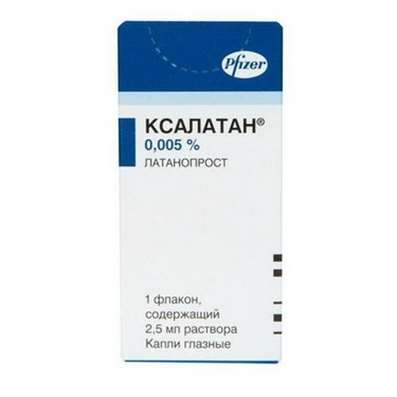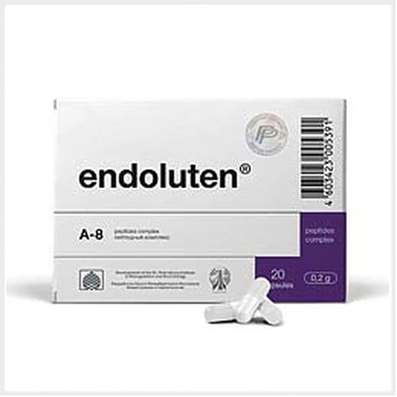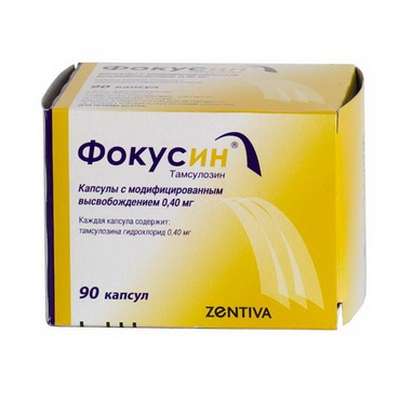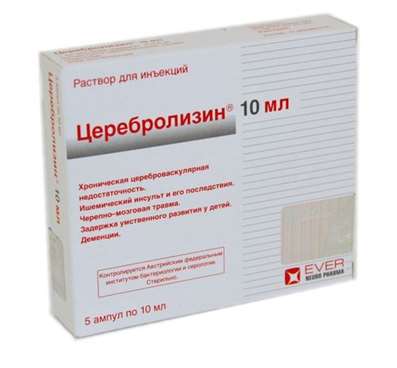Instruction for use: Bromdihydrochlorphenylbenzodiazepine
I want this, give me price
The Latin name of the substance Bromdihydrochlorphenylbenzodiazepine
Bromdihydrochlorphenylbenzodiazepinum (genus. Bromdihydrochlorphenylbenzodiazepini)
Chemical name
7-Bromo-5- (2-chlorophenyl) -1,3-dihydro-2H-1,4-benzodiazepin-2-one
Gross formula
C15H10BrClN2O
Pharmacological group:
Anxiolytics
The nosological classification (ICD-10)
F00 Dementia in Alzheimer's Disease (G30 +): Alzheimer's dementia; Alzheimer's dementia; Dementia in Alzheimer's disease
F03 Dementia, unspecified: Degenerative dementia; Dementia; Dementia presenilnaya; Dementia senile; Primary degenerative dementia; Senile dementia; Senile dementia of the Alzheimer's type; Senile dementia; Syndrome of dementia; Dementia; Mixed Dementia; Mixed forms of dementia; Senile Dementia
F05 Delirium not caused by alcohol or other psychoactive substances: Delirious condition
F07.2 Post-contusion syndrome: Post-traumatic encephalopathy; Postcommentary syndrome
F10.3 Abstinence: Alcohol withdrawal syndrome; Abstinence syndrome; Abstinence syndrome with alcoholism; Abstinence; Alcohol abstinence; Alcohol withdrawal status; Alcohol withdrawal syndrome; Postabstinctive disorder; Post-abstinence condition; Hangover syndrome; Abstinence syndrome; Alcohol abstinence syndrome; Alcohol withdrawal syndrome; Abstinence condition
F11 Mental and behavioral disorders due to use of opioids: heroin addiction; heroin addiction; Diagnosis of opioid dependence; Dependence on opioids; morphine withdrawal; Opiate withdrawal; opium addiction; Opioid dependence; Opioid addiction; Behavioral disorder and postabstinentnom for drug dependence
F20 Schizophrenia: Schizophrenic conditions; Exacerbation of schizophrenia; Schizophrenia; Chronic schizophrenia; Dementia praecox; Bleuler's disease; Psychotic discordant; Dementia early; The febrile form of schizophrenia; Chronic schizophrenic disorder; Psychosis of the schizophrenic type; Acute form of schizophrenia; Acute schizophrenic disorder; Cerebral Organic Insufficiency in Schizophrenia; Acute attack of schizophrenia; Schizophrenic psychosis; Acute schizophrenia; Sluggish schizophrenia; Sluggish schizophrenia with apathoabulic disorders; Acute stage of schizophrenia with excitation
F23 Acute and transient psychotic disorders: Psychogenic psychosis; Psychosis acute; Short-term psychotic disorder
F25 Schizoaffective disorders: Schizoaffective disorders; Schizoaffective psychosis; Schizoaffective disorder
F30 Manic episode: Manic-depressive disorder; Manic agitation; Manic state; Manic conditions; A manic condition; Manic syndrome; Acute manic syndrome
F32 Depressive episode: Adynamic subdepression; Astheno-adynamic subdepressive states; Asthenodepressive disorder; Astheno-depressive disorder; Asthenodepressive state; Astheno-depressive state; Major Depressive Disorder; Vyaloapatichesky depression with retardation; Double depression; Depressive pseudodement; Depressive illness; Depressive mood disorder; Depressive disorder; Depressive mood disorder; Depressive state; Depressive disorders; Depressive syndrome; Depressive syndrome larviated; Depressive syndrome with psychoses; Depressed masks; Depression; Depression Depletion; Depression with the phenomena of inhibition within the framework of cyclothymia; Depression is smiling; Involutional depression; Involutionary melancholy; Involutional depression; Manic-depressive disorder; Masked Depression; Melancholic Attack; Neurotic depression; Neurotic depression; Shallow Depression; Organic depression; Organic depressive syndrome; Simple depression; Simple melancholic syndrome; Psychogenic depression; Reactive depression; Reactive depression with moderate psychopathological symptoms; Reactive depressive states; Reactive depression; Recurrent depression; Seasonal depressive syndrome; Severostatic depression; Senile Depression; Senile Depression; Symptomatic Depression; Somatogenic depression; Cyclotymic depression; Exogenous Depression; Endogenous depression; Endogenous Depressive Conditions; Endogenous Depression; Endogenous depressive syndrome
F40.0 Agoraphobia: Fear of open space; Fear of being in a crowd
F40.8 Other phobic anxiety disorders: Acrophobia
F41.0 Panic disorder [episodic paroxysmal anxiety]: Panic state; Panic attack; Panic; Panic disorder
F41.1 Generalized anxiety disorder: Generalized anxiety disorders; Generalized alarm; Phobic neurosis; Anxiety reaction; Anxious neurosis
F42 Obsessive-compulsive disorder: Obsessive-compulsive syndrome; Obsessive compulsive states; Obsessive-compulsive syndrome; The obsession syndrome; The obsession neurosis; Obsessive-compulsive neurosis; Obsessions
F43.0 Acute stress reaction
F43.1 Post-traumatic stress disorder: Combat fatigue; Catastrophe Syndrome; The survivor's syndrome; Traumatic isolation; Traumatic neurosis; Traumatic syndrome; Post-traumatic stress disorder
F43.2 Adverse Reactions Disorder: Mental Adjustment Disorder
F44 Dissociative [conversion] disorders: Psychogenic psychosis; Conversion disorder; Dissociative phenomena; Pseudodegmentation; Conversion symptoms
F45 Somatoform disorders: Psychosomatic disorder; Psychosomatic disorders; Psychosomatic diseases; The state of excitement in somatic diseases; Functional psychosomatic disorders of the cardiovascular system
F45.2 Hypochondriacal disorder: Hypochondriac and asthenoipochondrial condition; Hypochondria; Sesto-hypochondriacal disorders; Asthenoepochondrial phenomena; Hypochondriacal disorders; Hypochondriac neurosis; Hypochondriacal-senesthetic syndrome
F48 Other neurotic disorders: Neurosis; Neurological diseases; Neurotic disorders; Neurotic condition; Psychoneurosis; Anxious-Neurotic Conditions; Chronic neurotic disorders; Emotional reactive disorders
F51.0 Insomnia of inorganic etiology: Situational insomnia; Situational sleep disorders
F60 Specific personality disorders
F60.2 Dissocial personality disorder: Antisocial personality; Psychopathic personality; Psychopathy; Psychopathy of an excitable type; Psychopathy and psychopathic conditions; Psychopathy of a hysterical type; Psychopathy with a predominance of anxiety and anxiety; Braking Personality
F60.3 Emotionally unstable personality disorder: Mood swings; Mental lability; Emotional fence; Emotional detachment; Mood Change; Lability of mood; Instability of emotional background; Mixed emotional disorders; The state of emotional stress; Emotional lability; Emotional tension; Emotional instability; Emotional instability; Mood disturbance; Mood disorders; Decreased mood; Deterioration of mood; Mood swings
F63 Disorders of habits and drives: Impulsive drives and actions
F79 Mental retardation, unspecified: Mental retardation; Infantilism mental; Violation of mental activity; Oligophrenia; Lag behind mental development; Delayed development of intellectual abilities in children and adolescents; Slowed mental development in children; Maloumia; Oligopsihia; Mental failure; Impaired mental function; Mental retardation; Lack of intellectual development in children; Lack of mental development in children; Mental retardation; Lack of mental development in children; Mental retardation
F95 Teaki: Teak child; Children's teak; Nerve Teacks in Children; Nervous teack; Teak
G40 Epilepsy: Atypical convulsive seizures; Atonic seizures; Great seizures; Large convulsive seizures; Generalized Absences; Jackson epilepsy; Diffuse large seizure; Diencephalic epilepsy; Cortical and non-convulsive forms of epilepsy; Primary-generalized seizures; Primary-generalized tonic-clonic seizure; Pycnoleptic absence; Repeated epileptic seizures; Attack generalized; Seizure fit; Refractory epilepsy in children; Complicated convulsive seizures; Mixed seizures; Mixed forms of epilepsy; Convulsive condition; Convulsive seizures; Convulsions; Convulsive forms of epilepsy; Epilepsy grand mal; Epileptic seizures; Great seizures in children
G41 Epilepticus: Convulsive Syndrome; Convulsive status in children
G47.0 Disorders of falling asleep and maintaining sleep [insomnia]: Insomnia; Insomnia, especially difficulty falling asleep; desynchronosis; Prolonged sleep disturbance; Difficulty falling asleep; Short-term and transient insomnia; Short-term and chronic sleep disorders; Short or shallow sleep; Violation of sleep; Disturbed sleep, especially in the phase of falling asleep; Infringements sleep; sleep disturbances; Neurotic sleep disturbance; Shallow superficial sleep; shallow sleep; Poor quality of sleep; Night awakening; sleep Pathology; Postsomnic violation; transient insomnia; Trouble falling asleep; Early awakening; Early morning awakening; Early awakening; sleep disorder; somnipathy; persistent insomnia; difficult to fall asleep; difficulty falling asleep; Difficulty falling asleep in children; persistent insomnia; Worsening sleep; Chronic insomnia; Frequent night and / or early morning awakening; Frequent nocturnal awakening and a sense of the depth of the non-sleep; Night waking
R25.2 Cramp and spasm: Muscle spasms in tetanus; Pain syndrome with smooth muscle spasms; Pain syndrome with smooth muscle spasms (renal and biliary colic, intestinal spasm, dysmenorrhea); Pain syndrome with spasms of smooth muscles of internal organs; Pain syndrome with spasms of smooth muscles of internal organs (renal and biliary colic, intestinal spasm, dysmenorrhea); Painful muscular spasm; Mimic spasms; Muscular spasticity; Muscle spasms; Muscular spasms of central origin; Muscular spasticity; Muscle spasm; Neurological contractures with spasms; Night cramps in the extremities; Nocturnal cramps in the legs; Night cramps calf muscles; Symptomatic convulsive state; Vesta Syndrome; Spasm of smooth muscles; Spasm of smooth vascular musculature; Spasm of muscles; Spasm of striated muscle due to organic diseases of the central nervous system; Skeletal muscle spasms; Spasms of smooth muscles of internal organs; Skeletal Muscle Cramps; Spastic states of striated musculature; Spasmodic pain syndrome; The spastic condition of smooth muscles; Spasticity of skeletal musculature; Muscle cramp; Convulsions; Cramps of the calf muscles; Convulsions of central origin; Convulsive condition; Convulsive Syndrome; Convulsive status in children; Tonic convulsions; Cerebral spasmodic syndrome; clasp knife phenomenon
R45.0 Nervousness: Stress nervous; Mental stress; State of tension; Stress states; Nervous disorders; Voltage; Tension; Psychoemotional stress; Stress state; Emotional tension; Feeling of inner tension; Psychoemotional stress in stressful situations; Nerve Stress Reactions; Internal stress; The state of persistent mental stress; Tearfulness
R45.4 Irritability and anger: Neurosis with increased irritability; Outbursts of anger; Anger; Resentment; Increased irritability; Increased irritability of the nervous system; Irritability; Irritability in neuroses; Irritability in psychopathic disorders; Symptoms of irritability; Dysphoria
Z100 * CLASS XXII Surgical practice: Abdominal surgery; adenomectomy; Amputation; Coronary angioplasty; Angioplasty of the carotid arteries; Antiseptic skin treatment for wounds; Antiseptic Hand; Appendectomy; atherectomy; Balloon coronary angioplasty; Vaginal hysterectomy; The coronary bypass; Interventions in the vagina and cervix; Interventions on the bladder; Intervention in the mouth; Restoration and reconstructive surgery; Hand hygiene of medical personnel; Gynecologic surgery; Gynecological intervention; Gynecological surgery; Hypovolemic shock during operations; Disinfection of purulent wounds; Disinfection of wounds edges; Diagnostic intervention; Diagnostic procedures; Cervical Diathermocoagulation; Long-surgery; Replacing the fistula catheters; Infection in orthopedic surgery; Artificial heart valve; cystectomy; Short-term outpatient surgery; Short-term operation; Short surgical procedures; Krikotireotomiya; Blood loss during surgery; Bleeding during surgery and in the postoperative period; Kuldotsentez; laser photocoagulation; laser coagulation; retinal laser coagulation; Laparoscopy; Laparoscopy in Gynecology; CSF fistula; Small gynecological operations; Small surgical procedures; Mastectomy and subsequent plastic; mediastinotomy; Microsurgical operations on the ear; Mukogingivalnye operation; suturing; Minor surgery; neurosurgical operation; Immobilization of the eyeball in ophthalmic surgery; testectomy; pancreatectomy; Perikardektomiya; The period of rehabilitation after surgery; The period of convalescence after surgery; Percutaneous transluminal coronary angioplasty; Pleural thoracentesis; Pneumonia postoperative and posttraumatic; Preparation for surgical procedures; Preparation for surgery; Preparation of the surgeon's hands before surgery; Preparation of the colon for surgical procedures; Postoperative aspiration pneumonia in neurosurgical and thoracic surgery; Postoperative nausea; Postoperative bleeding; postoperative granuloma; postoperative shock; The early postoperative period; myocardial revascularization; Radiectomy; gastric Resection; bowel resection; uterine Resection; liver Resection; enterectomy; Resection of part of the stomach; Reocclusion of the operated vessel; Bonding tissues during surgical procedures; Removal of sutures; Condition after eye surgery; Condition after surgery; Condition after surgery in the nasal cavity; Condition after gastrectomy; Status after resection of the small intestine; Condition after tonsillectomy; Condition after removal of the duodenum; Condition after phlebectomy; Vascular surgery; Splenectomy; Sterilization of surgical instruments; Sterilization of surgical instruments; sternotomy; Dental surgery; Dental intervention in periodontal tissues; strumectomy; Tonsillectomy; Thoracic surgery; Thoracic surgery; total gastrectomy; Transdermal intravascular coronary angioplasty; Transurethral resection; Turbinektomiya; Removal of a tooth; cataract surgery; Removal of cysts; tonsillectomy; Removal of fibroids; Removing the mobile primary teeth; Removing polyps; Removing broken tooth; Removal of the uterus body; Removal of sutures; Fistula likvoroprovodyaschih ways; Frontoetmoidogaymorotomiya; Surgical infection; Surgical treatment of chronic limb ulcers; Surgery; The surgery in the anal area; The surgery on the colon; Surgical practice; The surgical procedure; Surgical interventions; Surgery on the gastrointestinal tract; Surgical procedures on the urinary tract; Surgical procedures on the urinary system; Surgical intervention of the genitourinary system; Surgical procedures on the heart; Surgical manipulation; surgery; Surgery on the veins; Surgical intervention; Vascular surgery; Surgical treatment of thrombosis; Surgery; cholecystectomy; Partial gastric resection; hysterectomy; Percutaneous transluminal coronary angioplasty; Percutaneous transluminal angioplasty; Coronary artery bypass; tooth Extirpation; Extirpation of milk teeth; pulpectomy; pulsative cardiopulmonary bypass; tooth Extraction; teeth Extraction; cataract extraction; Electrocoagulation; endourological intervention; episiotomy; Etmoidotomiya; Complications after tooth extraction
CAS Code
51753-57-2
Characteristics of the substance Bromodihydrochlorophenylbenzodiazepine
White or white with a creamy hue of crystalline powder. Almost nerastvorim in water and ether, little soluble in ethanol, it is difficult in chloroform.
Pharmacology
Pharmacological action - anticonvulsant, anxiolytic, miorelaxing, central, sleeping, sedative.
Stimulates benzodiazepine receptors, increases the sensitivity of GABA receptors to the mediator, increases the inhibitory effect of GABA in the central nervous system. Reduces the excitability of the subcortical structures of the brain, inhibits polysynaptic spinal reflexes. Reduces emotional tension, reduces anxiety, fear, anxiety. Suppresses the spread of excitation that occurs in epileptogenic foci in the cortex, thalamus and limbic structures of the brain due to increased presynaptic inhibition (increased activity of the focus does not decrease).
Well absorbed from the digestive tract. Time to reach Cmax - 1-2 hours Metabolised in the liver. T1 / 2 - 6-10 hours Excreted by the kidneys. Decreased liver and kidney function slows clearance and leads to cumulation.
Application of the substance Bromodihydrochlorophenylbenzodiazepine
Neurotic, neurotic, psychopathic and psychopathic conditions, accompanied by anxiety, fear, increased irritability, tension and emotional lability; Sleep disorders, obsessive states, panic disorder, phobias, reactive psychosis; Vegetative lability, hypochondriacal-senesthetic syndrome; Seizures of various etiologies, temporal and myoclonic epilepsy, epileptic status, rigidity of muscles, tick, athetosis, hyperkinesis; Premedication (as a component of induction anesthesia); As part of complex therapy for withdrawal and toxicomanic syndrome, schizophrenia (febrile form, hypersensitivity to antipsychotic drugs); Prevention of states of fear and emotional stress.
Contraindications
Pronounced myasthenia gravis, severe liver damage (cirrhosis, Botkin's disease) and kidney; Poisoning with other tranquilizers, neuroleptics, sleeping pills, narcotic drugs, alcohol; Pregnancy, breast-feeding.
Application in pregnancy and lactation
Contraindicated in pregnancy. At the time of treatment should stop breastfeeding.
Side effects of the substance Bromodihydrochlorophenylbenzodiazepine
From the nervous system and sensory organs: dizziness, headache, drowsiness, muscle weakness, memory impairment, concentration of attention, coordination of movements, paradoxical agitation, ataxia, mydriasis.
On the part of the intestine: dry mouth, nausea, diarrhea.
Allergic reactions: skin rash, itching.
Other: dysuria, dysmenorrhea, decreased libido, addiction, drug dependence.
Interaction
Strengthens (mutually) the action of neuroleptics, tranquilizers, sleeping pills, anesthesia, analgesic, anticonvulsants, alcohol.
Overdose
Symptoms: marked depression of consciousness, cardiac and respiratory activity.
Treatment: monitoring of vital body functions, maintenance of respiratory and cardiovascular activity, symptomatic therapy. Specific antagonist flumazenil (iv 0.2 mg - if necessary up to 1 mg - 5% glucose solution or 0.9% sodium chloride solution).
Precautions for the substance Bromodihydrochlorophenylbenzodiazepine
As a corrector, removing or reducing some of the side effects, it is possible to use mesocarb. Use with caution in cases of organic cerebral insufficiency. Cancellation should be carried out gradually, by lowering the dose to reduce the risk of withdrawal syndrome.
Do not use during work drivers of vehicles and people whose profession is associated with increased concentration of attention. For the duration of treatment should be refrained from drinking alcohol.

 Cart
Cart





